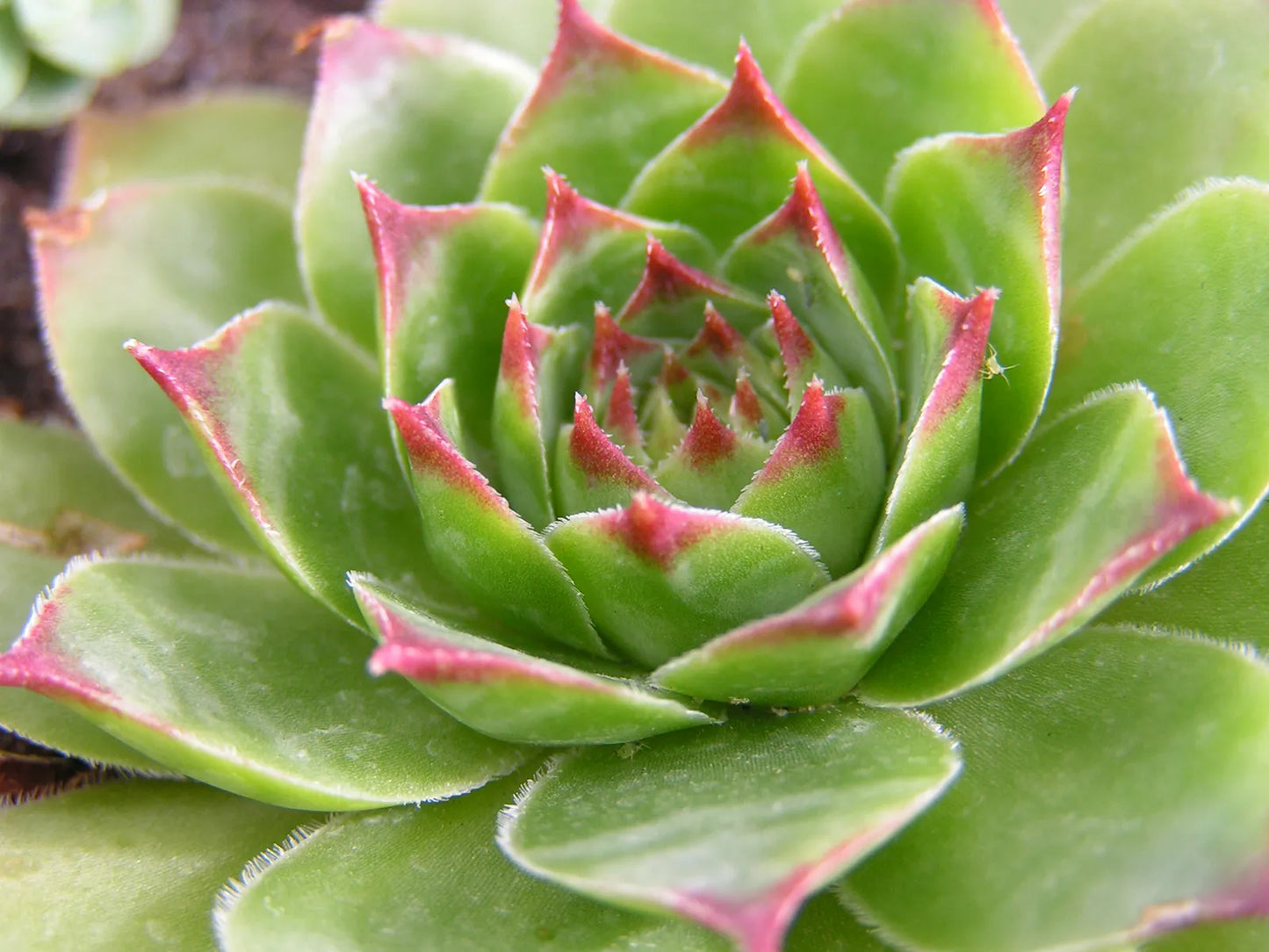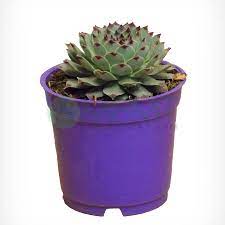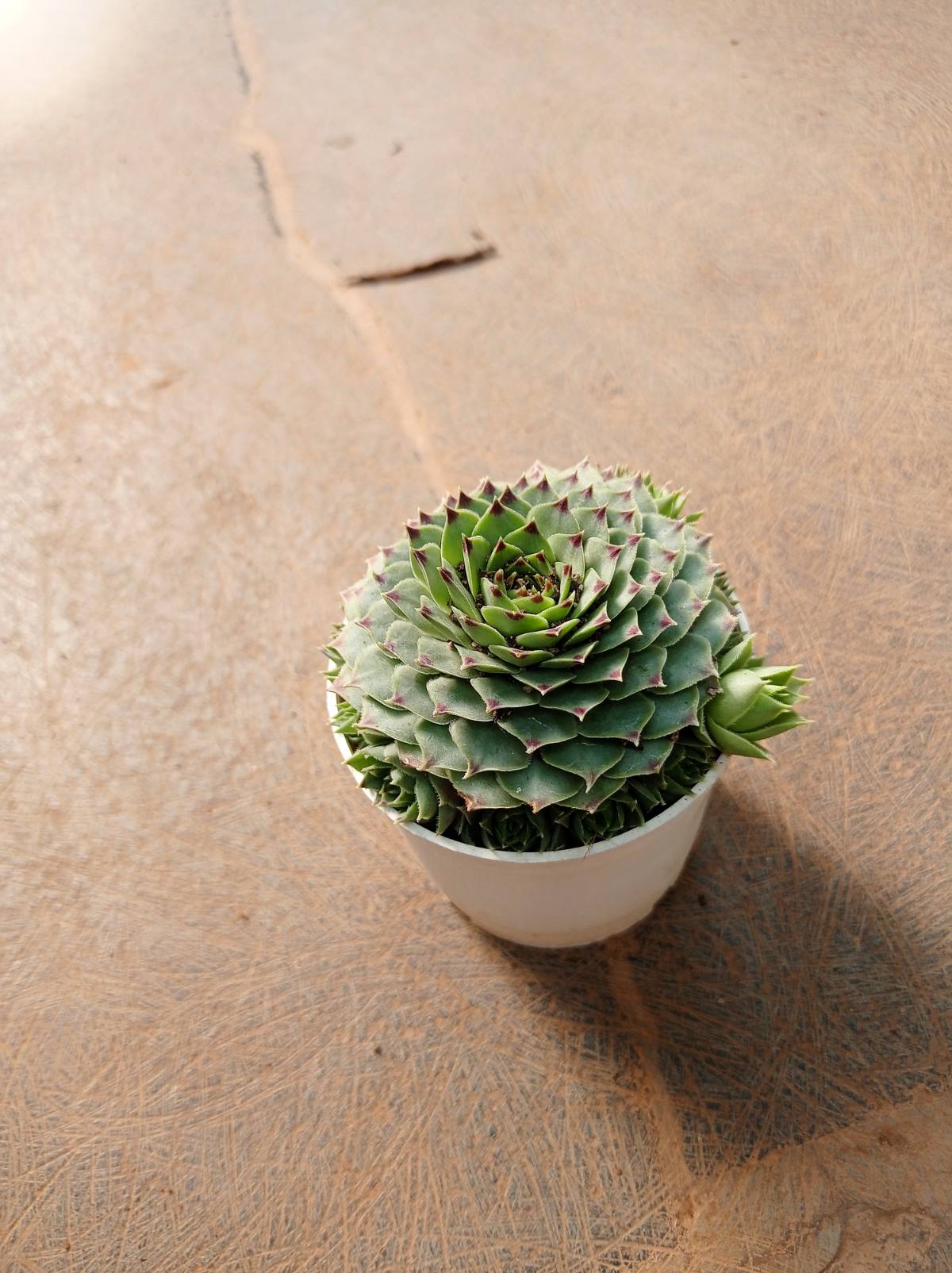Plantsden
Sempervivum Tectorum Green in 4 inch pot
Sempervivum Tectorum Green in 4 inch pot
Orders are shipped directly from our nursery in Bangalore
Specifications:
Couldn't load pickup availability



(above ₹499)
3-6 hrs of direct sunlight
3-6 hrs of direct sunlight
Water when topsoil is dry. Don't over water.
Water when topsoil is dry. Don't over water.
Description
Description
Common Houseleek, scientifically known as Sempervivum tectorum, is a hardy and versatile succulent plant that has been cultivated and cherished for centuries for its distinctive rosette-shaped foliage and resilience. Here's a description of the Common Houseleek:
Appearance: Common Houseleek is characterized by its dense, low-growing rosettes of fleshy, thick leaves. The leaves are typically green, sometimes tinged with red or brown, and have pointed tips. The rosettes form a tight clump, and as the plant matures, it can produce numerous offsets, creating a charming, clustered effect. When it flowers, typically in late spring or summer, a tall flower stalk emerges from the center of the rosette, bearing small, star-shaped flowers that range in color from white to pinkish-red.
Size: Common Houseleek varies in size, but individual rosettes are usually 2 to 4 inches (5 to 10 centimeters) in diameter. The entire plant can reach a height of 4 to 8 inches (10 to 20 centimeters) and spreads gradually through offsets.
Light Requirements: This succulent thrives in full sun to partial shade. It can tolerate a wide range of light conditions but often displays its best colors and forms when exposed to plenty of sunlight.
Watering: Common Houseleek is a drought-tolerant plant that prefers well-draining soil. Water sparingly, allowing the soil to dry out between waterings. Overwatering can lead to root rot, so it's crucial not to let the plant sit in water.
Temperature: Common Houseleek is cold-hardy and can survive freezing temperatures. It is well-suited to temperate climates and can withstand a range of temperatures. However, it may benefit from some protection in extreme heat.
Maintenance: One of the attractive features of Common Houseleek is its low maintenance requirements. It requires minimal pruning, mainly to remove spent flower stalks and any dead or damaged leaves. Additionally, you can divide and replant offsets to propagate new plants.
Propagation: Common Houseleek can be propagated easily by removing offsets from the mother plant and replanting them in suitable soil. It's a simple and reliable way to expand your collection.
Uses: Historically, Common Houseleek was often planted on roofs to protect against lightning and fire, which is how it got its name (Sempervivum means "always living" or "ever alive"). Today, it is primarily grown for its ornamental value and is a popular choice for rock gardens, container gardens, and succulent arrangements.
Toxicity: Common Houseleek is non-toxic to humans and pets, making it a safe choice for homes with animals or small children.
In summary, Common Houseleek is a charming and hardy succulent with rosette-shaped foliage, making it a delightful addition to gardens, rockeries, or containers. Its low-maintenance nature, adaptability to various climates, and historical significance make it a fascinating and enduring plant choice.















